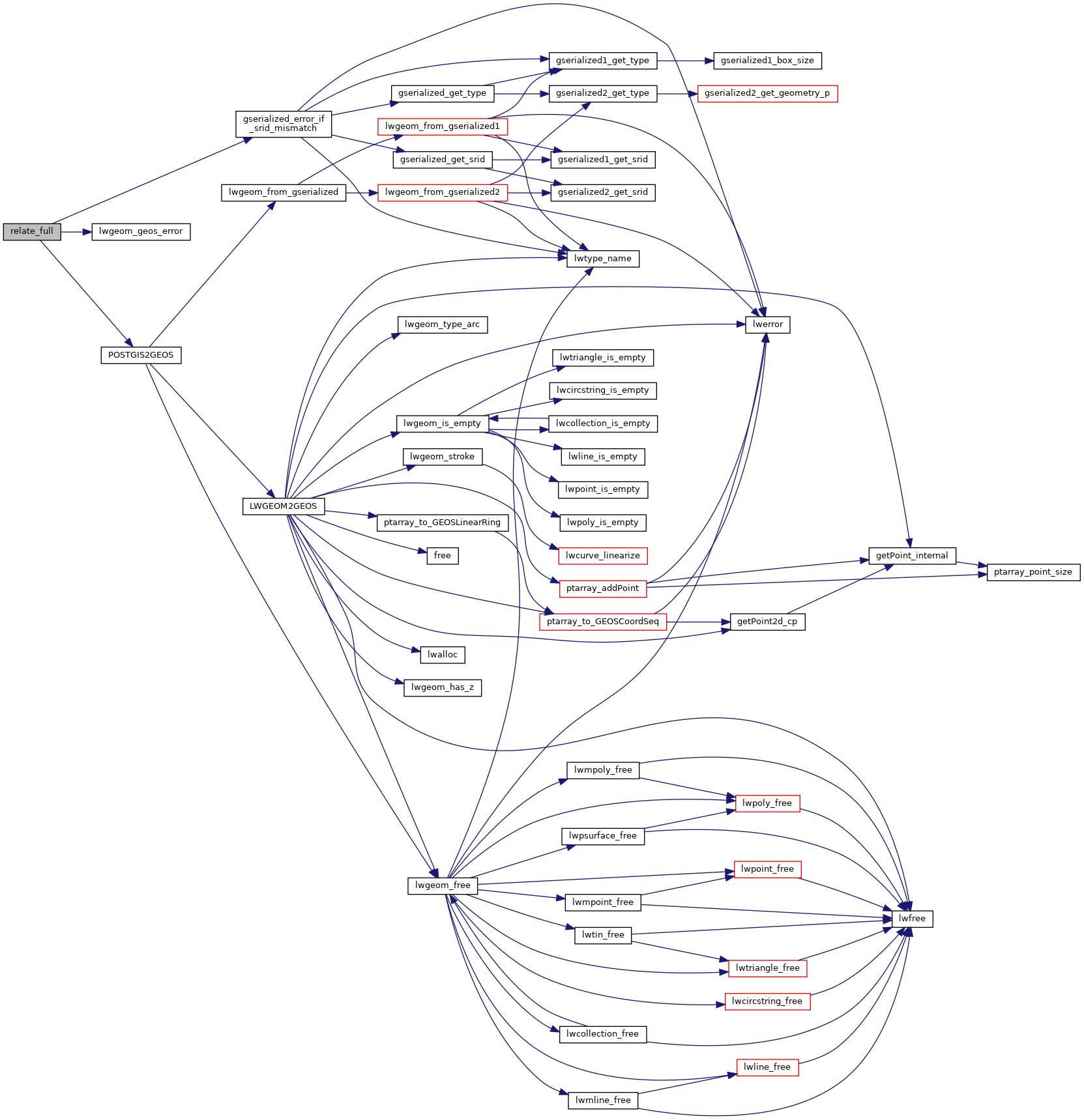◆ relate_full()
| Datum relate_full | ( | PG_FUNCTION_ARGS | ) |
Definition at line 2572 of file postgis/lwgeom_geos.c.
void gserialized_error_if_srid_mismatch(const GSERIALIZED *g1, const GSERIALIZED *g2, const char *funcname)
Definition: gserialized.c:404
GEOSGeometry * POSTGIS2GEOS(const GSERIALIZED *pglwgeom)
Definition: postgis/lwgeom_geos.c:2775
Definition: liblwgeom.h:457
References gserialized_error_if_srid_mismatch(), HANDLE_GEOS_ERROR, lwgeom_geos_error(), POSTGIS2GEOS(), and result.
Here is the call graph for this function:
